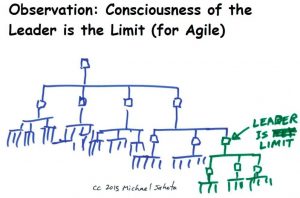In the wake of COVID-19, businesses across every market sector have innovated, restructured, and otherwise adapted to the oft-used ‘new normal.’ And while it may take some time before we see large-scale in-person events regularly occur, we as marketers should be prepared to adapt our hosted events into either a virtual or hybrid model—a hybrid event contains both in-person and virtual elements.
So how do you transfer your regional and national sales meetings, brand launches, live podcast sessions, conferences, and other brand experiences from an in-person to an engaging virtual or hybrid experience? With all of its considerations, having a solid plan at the onset will help structure the event for success. Read on to discover the items your firm should consider for your next event.
1. Determine the Needs
A great first place to start is determining what your needs are. These could range from communications technology tools, consultation on the flow of your event, A/V assistance, project management and coordination, branding guidance, or event execution support. A hybrid event can come with its unique challenges to that of an in-person event. Thinking through potential needs at the onset can save headaches later.
2. Ask the Right Questions
Along these lines, it’s crucial to ask the right questions. Is your firm looking for help with the execution of the event? Do you have a comprehensive event strategy? Are you covered on the technology front but need to develop a unique logo or bring in experiential elements? Asking the right questions and determining your needs at the onset will help your firm structure the event for success.
3. Use a Mix of Pre-Recorded and Live Elements
The number of locations, technology available at each site, and level of complexity involved can all impact how smoothly or efficiently your event goes. Mix pre-recorded and live elements to make sure potential complications are limited. Pre-recorded elements can guarantee the length of a segment and limit the number of individuals on-site, freeing up individuals who would otherwise be busy working on something else. Live elements bring connections as attendees experience the event simultaneously. Enable chat functionality within your chosen technology platform for those in different places to chat with one another or host a live concert for attendees with a live feed of other locations on display. Elements like these create engagement and interaction between attendees.
4. Practice, Practice, Practice
While mixing pre-recorded and live elements is a great strategy to limit certain potential complications, it is essential to practice before the event. Your event may necessitate using new tools or more advanced versions of familiar tech tools. Practice with the technology you will use during the event to avoid potential issues as individuals assisting on the day may have varying levels of familiarity with the tools and require training.
Your event team should do a run-through ahead of time to not only test out the technology, but to prepare what to say, where to be, and how to transition between videos, from video to live feeds, or from the live feed to live feed. Trial runs will not guarantee that an event will go off without a hitch, but they will help lessen potential pitfalls.
5. Keep the Event Similar to an In-Person Format
Given the differences between our pre- and post-COVID worlds, people are seeking a sense of normalcy in their experiences. If your firm’s hybrid event is taking the place of what would previously be an in-person event, try to keep as many of the elements the same as possible. For an awards banquet, consider sending the award to its recipients ahead of time and filming an acceptance speech. Have the venues for the in-person portion include catering with a reel displaying a pre-recorded video of company highlights—being mindful of social distancing best-practices. The possibilities are endless when strategic planning and creative brainstorming occur.
6. Consider the Touchpoints at Every Stage to Create a Positive Brand Experience
A hybrid event can still be a memorable one as the hybrid environment provides ample opportunities to incorporate positive interactions with your brand. Think through the attendee journey and develop a holistic experience that generates excitement before the event, engages attendees throughout, and leaves them talking about the experience with others after.
A hybrid event can still be a memorable one as the hybrid environment provides ample opportunities to incorporate positive interactions with your brand.
7. Incorporate Interactive Elements
Sending materials for the event ahead of time is one way to generate excitement in the days, weeks, or months leading up to your firm’s event. These items can also create an element of interactivity on the day of – giving the event host an item to reference. For example, the host could tell participants when to reach for relevant materials throughout the program.
Consider sending creative gifts such as company-branded games, self-care kits, or accessories for happy hours; debut a new T-shirt or gift a notebook that attendees can use to fill in content during the event. These can help create tangible and tactical items for attendees to engage with before, during, and after. Where possible, include items unique to your firm for an element of personalization.
8. Engage the Digital Space
In addition to physical items, another technique is to create opportunities for attendees to communicate within the communications platform and engage on social media. Turn on commenting capabilities within your tech platform and encourage communication between individuals in other locations. Include breakout sessions for networking to occur in smaller groups. Consider creating a hashtag for the event for attendees to include when tagging photos or sharing updates and reflections about the event. Determine which forms of engagement would work best for your event and focus on those—keeping in mind the level of effort required and the resources available.
9. Put Safety Measures in Place
While your hybrid event will have a virtual component, the in-person element still exists. Make sure the appropriate measures that address both state safety guidelines and also individual comfort levels are in place.
10. Conduct a Post-Event Assessment
As with any other marketing initiative, set and track pre-determined metrics to determine whether or not the event was considered a success for your company. Surveys or setting up event-specific email addresses for people to send feedback are among the techniques you can use to make this determination. Gather sentiments about the experience at each stage and determine a scoring matrix to rank the items. These will provide you with insights on what people enjoyed and what could change in the future.
Don’t Stress
Lastly – take a deep breath and have fun. Rest assured that virtual and hybrid events are a new playground for most of the attendees as well as for many of us marketers, and attendees will appreciate your firm’s adaptability to make the event(s) happen.
Business & Finance Articles on Business 2 Community
(57)
Report Post




